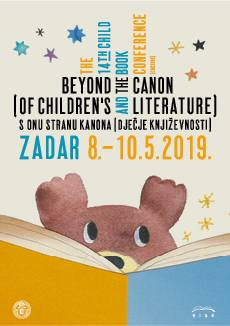Conference Theme
The Conference raises questions following recent research on the canon of children’s literature, focusing on exclusion from the canon, i.e. on literature and related phenomena and forms of expression which remain beyond the canon. Canonical works are generally considered to be of high value and vital for different spheres of human existence, both at the personal and at the social level. Simultaneously, literary and related systems which develop beyond the canon often prepare new beginnings which eventually influence the canon. Popular literature and children’s literature are examples of literary systems that enable the exploration of new areas and extend beyond their own boundaries, often creating new meanings and exploring innovative modes of expression. Thus, we also wish to encourage thinking about the position of children’s literature with regard to the literary canon in general and bring the attention of scholars and students to the frequent devaluation of the artistic quality of children’s literature as a whole, and to ascribing to it utterly utilitarian attributes. Such views place children’s literature beyond the mainstream canon, both national and international. We are particularly interested in the borderline position of children’s literature, picturebooks, young adult literature and related systems, which enrich the world of children’s culture and balance on the fine line between recognition and dispute. Accordingly, we also encourage participants to concentrate on works written for children placed beyond the canon of children’s literature, for different reasons, and on how they may cross an imaginary borderline between acceptance and rejection in either direction. We hope to pinpoint, understand, and clarify different factors that have an impact on these processes and explore how they may be viewed in a diachronic perspective. Taking these issues as starting points, the Conference will focus on the following general topics:
- Children’s literature and the literary canon
- Forming the canon of children’s literature: contexts and influences
- Inside and outside the canon: reasons for inclusion/exclusion and forgotten titles
- The canon of children’s literature vs. the canon of young adult literature
- Translation and publishing practices in relation to the canon(s) of children’s and young adult literature
- The international canon and the perception of own and other cultures in the national canons of children’s literature
- Canonical illustrations and the (re-)interpretations of children’s classics
- Reading practices and the canon of children’s literature
- Adaptations of the canonical titles of children’s and young adult literature
- The canon of children’s culture: literature, arts, multimodality, new media…



